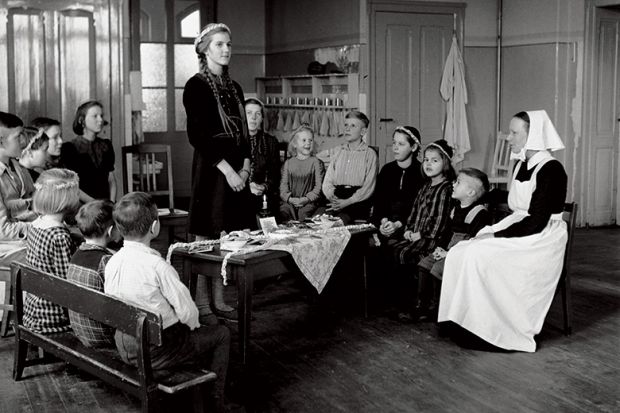In recent years, scholarship on the aftermath of the Second World War, especially concerning children, has grown steadily. The scale of the refugee/displaced person problem was huge and the efforts made by both military and civilian authorities and charities to help children are, for obvious reasons, appealing topics for historians. Lynne Taylor’s deeply researched book is a welcome addition to this literature, since it provides much-needed information about the procedures and regulations governing the search for and repatriation/resettlement of “unaccompanied children”.
This meant not only children who were literally wandering Europe alone – as many were – but also children who were in foster homes or orphanages in Germany, often there because they had been kidnapped from their families to be “Germanised” (many victims of the Lebensborn programme) or born to forced labourers who were subsequently deported or could not look after them at war’s end.
Taylor provides a great deal of detail about the institutional arrangements and disputes that overshadowed the administration of child search and “re-establishment”. She convincingly explains that the military authorities only reluctantly agreed to the presence of civilian bodies, once they realised that their own resources were insufficient to cope with the scale of the problem. This meant that Supreme Headquarters, Allied Expeditionary Forces (SHAEF) enjoyed oversight of the United Nations Relief and Rehabilitation Administration (UNRRA) and that their successor bodies, the United States Forces European Theater (USFET) and US Military Command in Europe (EUCOM), oversaw the International Refugee Organization (IRO) – and that the civilian authorities operated only in so far as the military ones allowed. But it was more complex than that, of course. The Allied Control Council, established to coordinate policy between the four occupation zones, also had a view, as did the general councils governing the UNRRA and IRO. So too did various tracing charities, although these figure less prominently here.
The emerging Cold War threw further spanners in the works. The Soviets refused to be part of the IRO, once the Western Allies accepted that non-Jewish displaced persons who refused to be repatriated to what was now Soviet territory (predominantly Balts, Ukrainians and Poles from the eastern regions seized by the USSR) could instead be resettled in a third country. Once the West German state began to regain its sovereignty, as of 1949, many issues were left unresolved, such as who had the right to remove a child from its foster parents and whether it was even “in the child’s best interests” to do so.
This book documents, in great detail, the relationship between different bodies and the legal, ethical and political difficulties that surrounded child searching and resettlement, especially issues of nationality and citizenship. Yet the children themselves appear only as objects of policy, without agency, which is not how all those involved in child welfare work saw them at the time. Taylor has undertaken thorough research in the UNRRA and IRO archives but has not made use of the recently opened International Tracing Service archives. Through the documents held there, one sees not only how child search operated but, in the more than 10,000 cases that remain explorable, the ways in which the children themselves responded to what was happening to them.
Taylor’s book is a comprehensive analysis of the policies surrounding child search and resettlement and succeeds on its own terms. Readers wanting to know more of the human story, and in particular the voices of the children involved, will need to look elsewhere.
Dan Stone is professor of modern history at Royal Holloway, University of London.
In the Children’s Best Interests: Unaccompanied Children in American-Occupied Germany, 1945-1952
By Lynne Taylor
University of Toronto Press, 480pp, £64.99 and £27.99
ISBN 9781487502355 and 21943
Published 15 October 2017
POSTSCRIPT:
Print headline: Seek and you will find?
Register to continue
Why register?
- Registration is free and only takes a moment
- Once registered, you can read 3 articles a month
- Sign up for our newsletter
Subscribe
Or subscribe for unlimited access to:
- Unlimited access to news, views, insights & reviews
- Digital editions
- Digital access to THE’s university and college rankings analysis
Already registered or a current subscriber?




